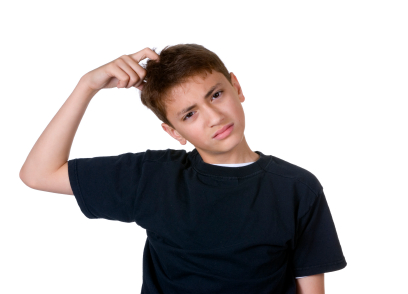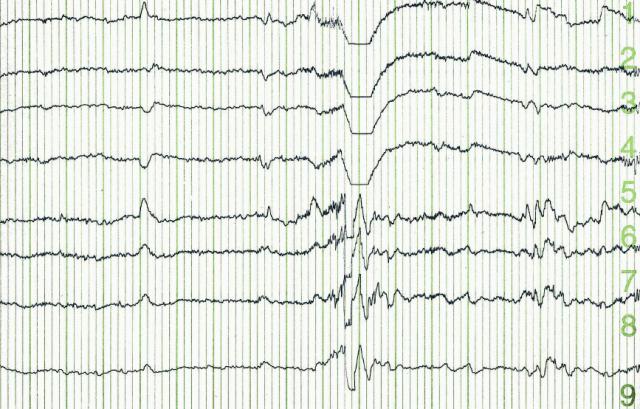Teenage athletes are more vulnerable to the lingering effect of concussion on short-term memory than younger athletes and adults, says a 2012 study. (1)
Researchers at the University of Montreal expected that pre-teens (ages 9 to 12) would suffer the greatest impairment of cognitive function - the functions of the brain that involve thinking, concentrating, learning, and reasoning - compared with teens (ages 13 to 16) and adults, and that adolescents would, in turn, have more severe deficits than adults.
While all three groups displayed deficits on a sensitive measure of brain function associated with working memory compared to their non-concussed peers - deficits which persisted more than six months after a sport concussion, even in the absence of clinical signs of concussion - researchers were surprised to find that teenage athletes not only performed significantly worse on a neuropsychological test of short-term memory than children and adults and the control group, but that activity in an area of their brains associated with working memory on neurophysiological testing was also significantly more impaired.

Whether such deficits impact a concussed teen's day-to-day life are not yet known. Likewise unclear are the reasons for such greater vulnerability. The study's authors, including Dave Ellemberg, PhD, a Professor in the Department of Kinesiology at the University of Montreal, speculated that it "could be related to the fact that the frontal part of the brain, responsible for working memory and other executive functions, undergoes its final stages of maturation during adolescence." (2,3,4)
"Therefore, it is possible that a blow to the head during this critical period of development could result in more severe deficits for adolescents compared to other groups," Ellemberg wrote.
Is recovery a two-step process?
The normal results found on neuropsychological tests in the presence of persistent neurophysiological deficits, Ellemberg says, appear to support a theory proposed in a 2009 article he co-authored (5) that recovery from a concussion is a two-phase process: an initial and rapid phase of functional recovery in which the brain of the concussed athlete compensates for the injury by adopting new strategies and/or functionally reorganizing (a phenomenon called neuroplasticity), which allows the athlete to perform normally on standard clinical assessments, followed by a prolonged phase during which subtle deficits in brain function are still present but not apparent on clinical examination and detectable only when more sensitive measures of brain activity are employed.
Study details
The study tested a group of 96 healthy male soccer, hockey, rugby, and football players divided into three age groups (9-12 years; 13-16 years; and adults), half of whom had suffered a sport concussion between six months and a year earlier. The most recent concussion was either the athlete's first or second lifetime concussion.
Adolescents were included because previous studies suggested that the age group was more vulnerable to concussion than adults to the effects of concussion on cognitive function (6) children were included because practically nothing is know about the effects of sport concussion on pre-adolescents.
Study participants took a battery of neuropsychological tests designed to measure different cognitive functions (visio-motor speed, verbal and visual memory and learning, attention, sequencing, mental flexibility, information processing speed and selective visual attention, short-term memory, word retrieval and word fluency) and a neurophysiological test in a soundproof room which measured brain wave activity while they were performing a visual oddball task.
No significant difference between the concussed and non-concussed athletes and between the three age groups was observed on most of the neuropsychological tests except on the test of working memory.
Regardless of age,  however, the results for concussed subjects showed a significant reduction on neurophysiological testing, specifically a reduction in the amplitude (i.e. height) of a component of the EEG brain wave (P3b) thought to reflect the amount of attentional resources available for the updating of information in working memory. The finding was consistent with a previous study of asymptomatic concussed adult athletes injured up to 2 years prior to testing.(7)
however, the results for concussed subjects showed a significant reduction on neurophysiological testing, specifically a reduction in the amplitude (i.e. height) of a component of the EEG brain wave (P3b) thought to reflect the amount of attentional resources available for the updating of information in working memory. The finding was consistent with a previous study of asymptomatic concussed adult athletes injured up to 2 years prior to testing.(7)
Concussed teens, however, displayed a P3b amplitude 24.3% lower than the control group, significantly lower than children (16.8% lower than controls) and adults (12.7% lower than controls). Because, consistent with previous studies of adult athletes)(8,9), no change was found in the amplitude of the P3a component, which is thought to reflect the orientation of attention and involve more automatic processing, the results suggested that it is complex neuropsychological processes which are more vulnerable to the impact of a sport concussion, especially in adolescents.
Confirms previous studies
While urging caution in interpreting the study's findings because of the small sample size, sports concussion neuropsychologist, Rosemarie Scolaro Moser, Ph.D, said the "the study raises important questions, and is valuable in supporting previous studies (9,10,11) which reveal persistent cognitive and other problems, such as reduced blood flow to the brain. (12,13) As our neurophysiological and neuroimaging capabilities become more refined and more well-researched, we will likely see these capabilities added to the diagnostic toolbox."
"What we are seeing is that the effects of concussion in youth are lasting longer and are more enduring than we have thought," says Moser. "All the more reason to not rush kids back to school or sports and to give their brains time to heal and restabilize. Thus, concussion healthcare professionals need to advocate for these athletes to provide them with the appropriate medical leave and academic accommodations, even in the face of insistent parents, coaches, and school personnel who may want to rush them back to their usual activity."
"This study adds to previous data, suggesting that changes in neuropshysiology may persist after symptoms resolve and after neurocognitive assessments return to baseline," said William P. Meehan, III, MomsTEAM expert and Director of the Sports Concussion Clinic in the Division of Sports Medicine at Boston Children's Hospital.
"I would argue that this supports the practice of instituting a symptom-free waiting period after symptom resolution and return of neurocognitive function, although I recognize that others, however, argue that there is no data suggesting that it is harmful to return to sport when symptoms have resolved and neurocognitive function has returned to baseline, even when changes in neurophysiology persist," says Meehan.
While acknowledging that there is currently no evidence that athletes returning with these persisting changes are more likely to get re-injured, suffer second impact syndrome, or suffer long-term problems, Meehan "still thinks it is better for athletes to institute a symptom- free waiting period."
Unanswered questions
"There is certainly growing body of evidence that, once the brain has been injured, it never returns to 100%, says Steven Broglio, Ph.D, A.T.C., an Assistant Professor of Kinesiology at the University of Michigan,
In a 2009 study (9), for instance, Broglio reported lingering effects of concussion among college-age athletes more than two years after concussion, even where the participants performed normally on clinical tests.
The question then becomes, Broglio says, "if there are sub-clinical declines following injury, but no change/influence on everyday life and function, does it make a difference? I don't have an answer to this question."
Broglio also points out that all of the studies (his included) also have the fundamental flaw of relying on reports by athletes of injury (which studies have shown go unreported as much as 50% of the time (12) and not controlling for family history, genetics, lifestyle, and other factors that could influence cognitive health.
What we need, says Broglio, "is a 50- to 60-year longitudinal study that tracks high school (or younger) athletes with and without a concussion for the rest of their lives to see what the outcomes are."
"It is a myth that the young brain is more resilient" to the effects of concussion than adults, says Ellemberg. "All concussions need to be taken seriously," Ellemberg said, but "our findings suggest that they need to be managed differently for different age groups. Only future research will tell us how."
1. Baillargeon A, Lassonde M, Leclerc S, Ellemberg D. Neuropsychological and neurophysiological assessment of sport concussion in children, adolescents and adults. Brain Injury 2012;26(3):211-220.
2. Luna B, Padmanabhan A, O'Hearn K. What has fMRI told us about the development of cognitive control through adolescence? Brain and Cognition 2010;72:101-113.
3. Luna B, Garver KE, Urban TA, Lazar NA, Sweeney JA. Maturation of cognitive processes from late childhood to adulthood. Child Development 2004;75:1357-1372.
4. O'Hare ED, Lu LH, Houston SM, Bookheimer SY, Sowell ER. Neurodevelopmental changes in verbal working memory load-dependency: An fMRI investigation. Neuroimage 2008;42:1678-1685.
5. Ellemberg D, Henry LC, Macciocchi S, Guskiewicz KM, Broglio SP. Advances in sport concussion assessment: From behavioral to brain imaging measures. J Neurotrama 2009:26:2365-2382.
6. Field M, Collins MW, Lovell MR, Maroon J. Does age play a role in recovery from sports-related concussion? A comparison of high school and college athletes. J Pediatrics 2003;142:546-553.
7. Lavoie ME, Dupuis F, Johnston KM, Leclerc S, Lassonde M. Visual P300 effects beyond symptoms in concussed college athletes. J. Clin. & Exp. Neuropsychology 2004;26:55-73.
8. Gosselin N, Theriault M, Leclerc S, Montplasir J, Lassonde M. Neurophysiological anomalies in symptomatic and asymptomatic concussed athletes. Neurosurgery 2000;11:4087-4092.
9. Broglio SP, Pontifex MB, O'Connor P, Hillman CH. The persistent effects of concussion on neuroelectric indices of attention. J. of Neurotrauma 2009;26:1463-1470.
10. Moser RS, Schatz P, Jordan BD. Prolonged Effects of Concussion in High School Athletes. Neurosurgery 2005; 57(2):300-306.
11. Schatz P, Moser RS, Covassin T, Karpf R. Early Indicators of Enduring Symptoms in High School Athletes with Multiple Previous Concussions. Neurosurgery 2011: 000.
12. McCrea M, Hammeke T, Olsen G, Leo P, Guskiewicz K. Unreported concussion in high school football players - Implications for prevention. Clin J of Sport Med 2004;14:13-17.
13. Neary J. et. al. Cerebrovascular Reactivity Impairment after Sport-Induced Concussion, Medicine & Science in Sports & Exercise 2011;43(12): 2241-2248.
14. Maugans T, Farley C, Altaye M, Leach J, Cecil K. Pediatric Sports-Related Concussion Produces Cerebral Blood Flow Alterations. Pediatrics 2012;129(1)(doi: 10.1542/peds.2011-2083)(accessed March 30, 2012).
Posted April 3, 2012; revised May 7, 2012 to include Dr. Meehan's comments.








